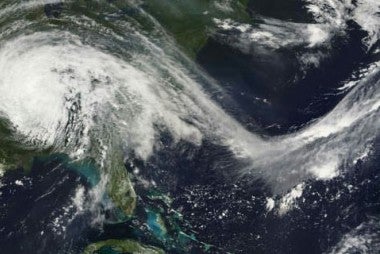New Atmospheric River Research
 Wenhao Dong is a CPAESS Project Scientist at NOAA Geophysical Fluid Dynamics Laboratory (GFDL). He specializes in model diagnostics and serves as a core member of the NOAA Model Diagnostic Task Force (MDTF) project. Currently, he is responsible for model diagnostics in the post-processing of the next-generation GFDL model. Recently Dr. Wenhao Dong published "Increasing Atmospheric Rivers Over Eastern US Affected by Pacific/North America Pattern." Please find this work on Science Advances and on NOAA’s GFDL site.
Wenhao Dong is a CPAESS Project Scientist at NOAA Geophysical Fluid Dynamics Laboratory (GFDL). He specializes in model diagnostics and serves as a core member of the NOAA Model Diagnostic Task Force (MDTF) project. Currently, he is responsible for model diagnostics in the post-processing of the next-generation GFDL model. Recently Dr. Wenhao Dong published "Increasing Atmospheric Rivers Over Eastern US Affected by Pacific/North America Pattern." Please find this work on Science Advances and on NOAA’s GFDL site.
Some of the key findings of this research include that a “significant increase in atmospheric river (AR) frequency is shown during wintertime over the Eastern U.S. in the past four decades. [That] the increase in AR frequency is linked to recent changes in the Pacific/North American teleconnection pattern, accompanied by a poleward shift of the midlatitude jet stream; and the linkage between AR frequency and the Pacific/North American teleconnection pattern has been verified in model simulations and has proven effective in predicting AR frequency at both monthly and seasonal scales (GFDL).”
When approached, Wenhoa graciously answered some questions regarding his research so that we could better understand it. In response to what the possible ramifications of this research might be, he explained. “We examined the wintertime atmospheric river (AR) activities targeting the eastern US (EUS) over the past four decades and found that there is a significant increase in AR frequency and intensity. This trend is closely linked to recent changes in the Pacific/North America (PNA) teleconnection pattern, accompanied by a poleward shift of the mid-latitude jet stream. The observed linkage between AR variability and the PNA index has been verified in 10-member GFDL AM4 simulations. This linkage has proven effective in predicting the AR frequency over EUS at both monthly and seasonal scales.”
Dr. Dong further shared “Our current follow-up work focuses on AR-associated precipitation. Our preliminary analyses suggested that, as the primary storm mode, increases in AR frequency bring more precipitation and elevate the risk of precipitation extremes over the EUS [eastern U.S.], potentially exacerbating flooding in this densely populated region. In the future, we aim to investigate the predictability of GFDL models in forecasting AR frequency and its related precipitation patterns over the EUS.”
When asked how this kind of research matters to society, Wenhao explained “There is a growing awareness that ARs are responsible for a wide range of environmental and socioeconomic impacts on the west coasts of the US. The related heavy rainfall, snowfall, and associated floods, especially during winter, have been a focus of many previous studies. Our analyses further extend these findings to its eastern counterpart, which would be a valuable addition to the AR field. More importantly, the identified linkage between the PNA pattern and AR frequency has important implications for subseasonal-to-seasonal forecasting of AR and related precipitation over the EUS.”
We greatly appreciate your fascinating work, and how it provides further insight into the changing climate here in the U.S. and how we might be able to increase forecasting skill for future events.
Do you love the nature of this research?
Watch Wenhao shared his work during a CPAESS Discovery Seminar speaking on "Simulation Mesoscale Convective Systems Using GFDL’s New High-Resolution General Circulation Model."









